Quick start
This guide will walk you through the basic steps of generating AI fashion models for fashion ecommerce with AI Fashion Model API.
Let's say you have an image of a female model and want to change the model while keeping the same pose and outfit as shown in the image below.
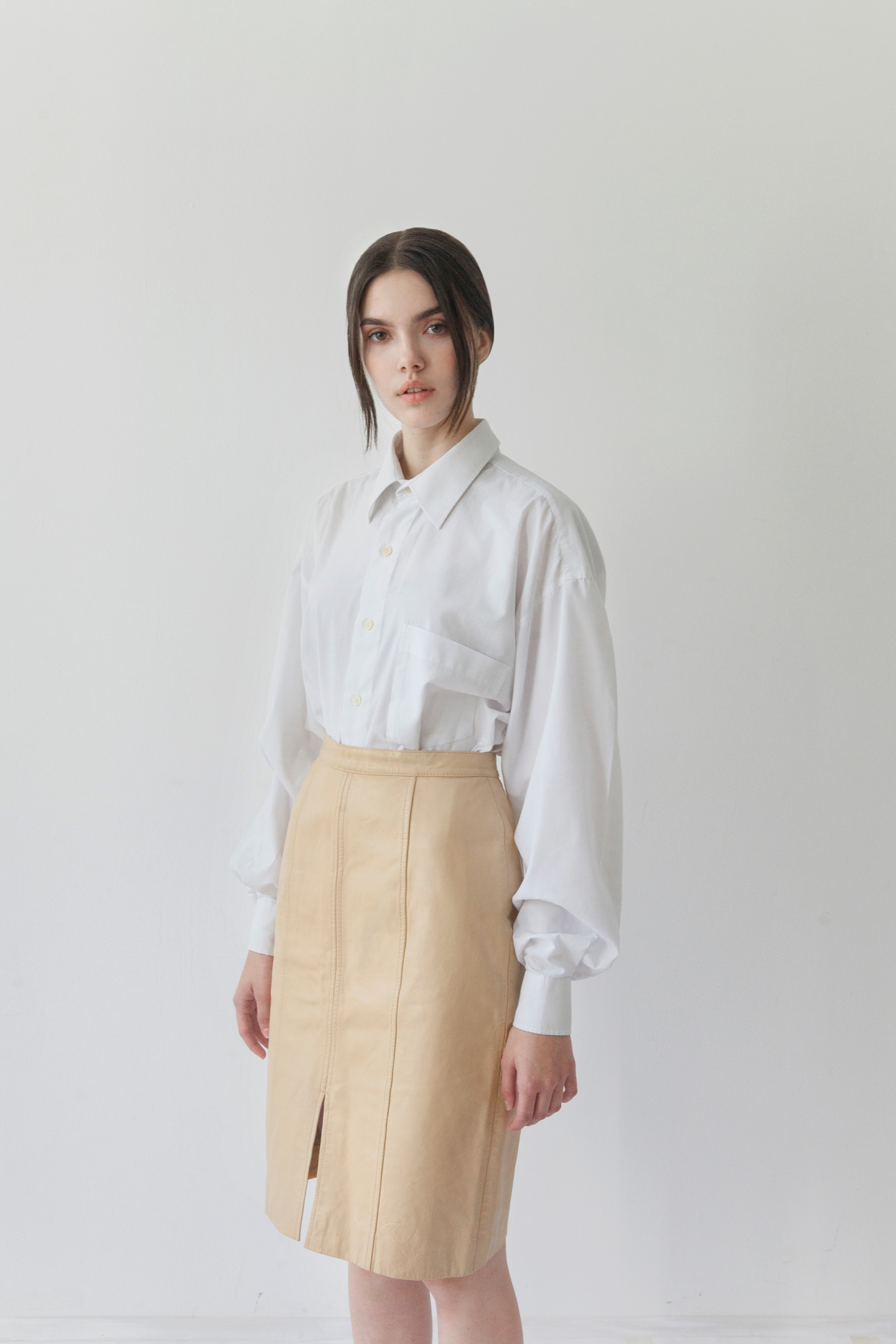
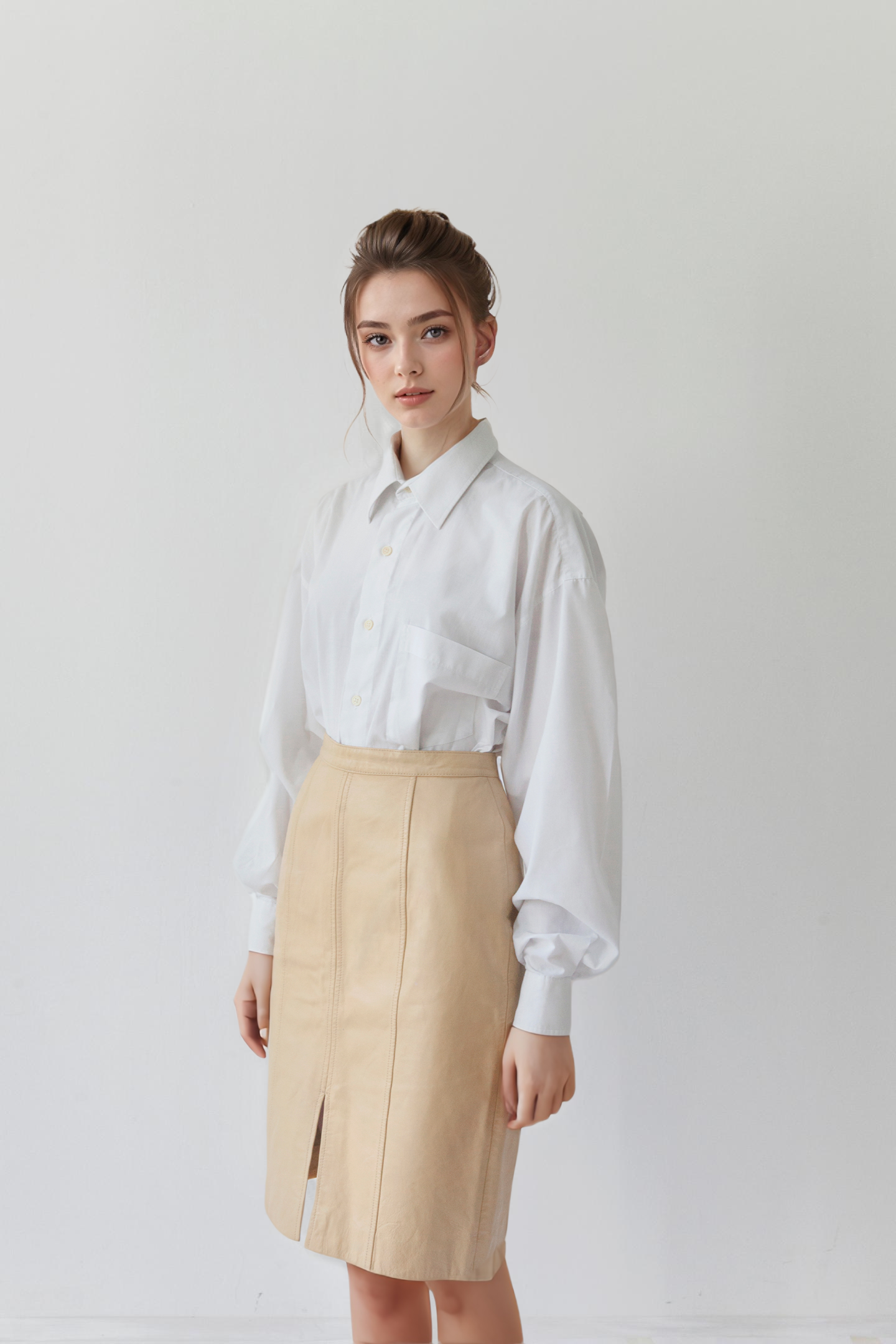
Complete in one move
Before completing the step-by-step tutorial, you can quickly experience the API through the following component, and you can also copy the
source code implemented in different languages and run it directly. Remember to replace YOUR_API_KEY in the source code with your own API Key.
package main
import (
"bytes"
"encoding/json"
"fmt"
"io"
"log"
"net/http"
"time"
)
func main() {
taskId, err := createTask()
if err != nil {
log.Fatalln("failed to create task:", err.Error())
return
}
log.Println("task created successfully:", taskId)
var results []TaskResult
for {
taskInfo, err := checkTask(taskId)
if err != nil {
log.Fatalln("failed to check task:", err.Error())
return
}
if taskInfo.Status == "error" {
log.Fatalln("task failed:", taskInfo.Message)
return
}
log.Printf("task status: %s, progress: %d%%\n", taskInfo.Status, taskInfo.Progress)
if taskInfo.Status == "pending" || taskInfo.Status == "running" {
time.Sleep(3 * time.Second)
continue
}
if taskInfo.Status == "success" {
results = taskInfo.Results
break
}
}
log.Println("task completed successfully")
for _, result := range results {
log.Println("original background image: ", result.OriginalBackgroundImage.DownloadUrl)
log.Println("preset background image: ", result.PresetBackgroundImage.DownloadUrl)
log.Println("transparent background image: ", result.TransparentBackgroundImage.DownloadUrl)
}
}
const apiKey = "YOUR_API_KEY"
type ResponseBody[D any] struct {
Code int `json:"code"`
Message string `json:"message"`
Data D `json:"data,omitempty"`
}
// createTask creates an asynchronous task to generate AI fashion models
func createTask() (taskId string, err error) {
data := map[string]any{
"image": "https://x-design-release.stariidata.com/poster/d8f92d37a0569bd6c3a7f27e2882fd74.png",
"maskType": "clothes",
"modelId": "002",
"backgroundTypes": []string{"original", "transparent", "preset"},
"presetBackgroundId": "035",
"count": 1,
}
jsonData, err := json.Marshal(data)
if err != nil {
return "", err
}
request, err := http.NewRequest("POST", "https://open.x-design.com/api/v3/image/ai-fashion-model/tasks", bytes.NewBuffer(jsonData))
if err != nil {
return "", err
}
request.Header.Set("X-Api-Key", apiKey)
request.Header.Set("Content-Type", "application/json")
client := &http.Client{}
response, err := client.Do(request)
if err != nil {
return "", err
}
defer func() { err = response.Body.Close() }()
if response.StatusCode != http.StatusOK {
return "", fmt.Errorf("failed to create task: %s", response.Status)
}
bodyBytes, err := io.ReadAll(response.Body)
if err != nil {
return "", err
}
responseBody := new(ResponseBody[map[string]any])
err = json.Unmarshal(bodyBytes, responseBody)
if err != nil {
return "", err
}
code := responseBody.Code
message := responseBody.Message
if code != 0 {
return "", fmt.Errorf("failed to create task: %s", message)
}
taskId = responseBody.Data["taskId"].(string)
return taskId, err
}
type TaskInfo struct {
TaskId string `json:"taskId"`
Status string `json:"status"`
Message string `json:"message"`
Progress int `json:"progress"`
Results []TaskResult `json:"results,omitempty"`
}
type TaskResult struct {
OriginalBackgroundImage ResultImage `json:"originalBackgroundImage,omitempty"`
PresetBackgroundImage ResultImage `json:"presetBackgroundImage,omitempty"`
TransparentBackgroundImage ResultImage `json:"transparentBackgroundImage,omitempty"`
}
type ResultImage struct {
ImageWidth int `json:"imageWidth"`
ImageHeight int `json:"imageHeight"`
ImageFormat string `json:"imageFormat"`
FileSize int `json:"fileSize"`
DownloadUrl string `json:"downloadUrl"`
}
func checkTask(taskId string) (taskInfo *TaskInfo, err error) {
request, err := http.NewRequest("GET", fmt.Sprintf("https://open.x-design.com/api/v3/image/ai-fashion-model/tasks/%s", taskId), nil)
if err != nil {
return nil, err
}
request.Header.Set("X-Api-Key", apiKey)
client := &http.Client{}
response, err := client.Do(request)
if err != nil {
return nil, err
}
defer func() { err = response.Body.Close() }()
if response.StatusCode != http.StatusOK {
return nil, fmt.Errorf("failed to check task: %s", response.Status)
}
bodyBytes, err := io.ReadAll(response.Body)
if err != nil {
return nil, err
}
responseBody := new(ResponseBody[TaskInfo])
err = json.Unmarshal(bodyBytes, responseBody)
if err != nil {
return nil, err
}
code := responseBody.Code
message := responseBody.Message
if code != 0 {
return nil, fmt.Errorf("failed to create task: %s", message)
}
return &responseBody.Data, err
}Step by step
To deep dive into the process of generating AI fashion models, you can follow the step-by-step tutorial below.
Prepare input image and mask
The AI Fashion Model API requires two images of the same size as input:
- The original image of clothing model that you want to change.
- The mask image where black areas represent clothing areas and white areas represent resets.
In this tutorial, you set the maskType to clothes and let the API automatically generate the mask image. This way you only need to provide the original image.
Here is the original image URL that you will use in this tutorial: https://x-design-release.stariidata.com/poster/d8f92d37a0569bd6c3a7f27e2882fd74.png (opens in a new tab)
The request body should look like below:
{
"image": "https://x-design-release.stariidata.com/poster/d8f92d37a0569bd6c3a7f27e2882fd74.png",
"maskType": "clothes"
}Choose a fashion model
The API provides a list of fashion models that you can choose from. Below are some preset models, you can also preview all available models in the Preset Models page.
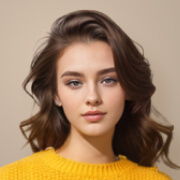

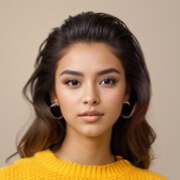
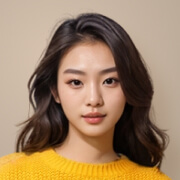

Suppose you want to use the model "Clara" in this tutorial. The request body should look like below:
{
"image": "https://x-design-release.stariidata.com/poster/d8f92d37a0569bd6c3a7f27e2882fd74.png",
"maskType": "clothes",
"modelId": "002"
}Choose background types
The API support four types of background:
- original: Indicates that the original background is used.
- preset: Indicates that the preset background is used.
- transparent: Indicates that the transparent background is used.
Multiple background types can be selected at the same time and below are some preset backgrounds, you can also preview all available backgrounds in the Preset backgrounds page.





Suppose you want to generate the model with original, transparent and preset background types. And the preset background ID is "035". The request body should look like below:
{
"image": "https://x-design-release.stariidata.com/poster/d8f92d37a0569bd6c3a7f27e2882fd74.png",
"maskType": "clothes",
"modelId": "002",
"backgroundTypes": ["original", "transparent", "preset"],
"presetBackgroundId": "035"
}Create asynchronous task
So far, the request body is ready as shown below:
{
"image": "https://x-design-release.stariidata.com/poster/d8f92d37a0569bd6c3a7f27e2882fd74.png",
"maskType": "clothes",
"modelId": "002",
"backgroundTypes": ["original", "transparent", "preset"],
"presetBackgroundId": "035",
"count": 1
}Now, you can send a POST request to the API endpoint to create an asynchronous task. Since generating AI fashion models is a time-consuming process, the API will return a task ID that you can use to check the status of the task and download the generated model images.
After sending the request, the API will return a response body with the task ID that you can use to check the status of the task and download the generated model images. The response body should look like below:
{
"code": 0,
"message": "Success",
"data": {
"taskId": "0f1c2d3e-4f5g-6h7i-8j9k-a1b2c3d4e5f6"
}
}Let's see how to send the request in different programming languages.
curl -X POST \
-H "X-Api-Key: YOUR_API_KEY" \
-H "Content-Type: application/json" \
-d '{
"image": "https://x-design-release.stariidata.com/poster/d8f92d37a0569bd6c3a7f27e2882fd74.png",
"maskType": "clothes",
"modelId": "002",
"backgroundTypes": ["original", "transparent", "preset"],
"presetBackgroundId": "035",
"count": 1
}' \
https://open.x-design.com/api/v3/image/ai-fashion-model/tasksCheck task status
So far, you have successfully created an asynchronous task and received a task ID. Now, you can send a GET request to the API endpoint to check the status of the task in fixed intervals until the task is completed.
After sending the request, the API will return a response body with the task status in the data field like below:
{
"code": 0,
"message": "Success",
"data": {
"taskId": "0f1c2d3e-4f5g-6h7i-8j9k-a1b2c3d4e5f6",
"status": "pending",
"progress": 0,
"results": null
}
}- taskId: The asynchronous task ID.
- status: The status indicates the current status of the task.
- progress: The progress indicates the percentage of the task completion.
- results: The results present only when the status is
success.
For more information about the task status, you can refer to the Task object documentation. Now let's see how to send the request in different programming languages.
curl -X GET \
-H "X-Api-Key: YOUR_API_KEY" \
https://open.x-design.com/api/v3/image/ai-fashion-model/tasks/0f1c2d3e-4f5g-6h7i-8j9k-a1b2c3d4e5f6Ready to run
Now, you have known how to create an asynchronous task and check the task status. Let's put all the code together and run it.
package main
import (
"bytes"
"encoding/json"
"fmt"
"io"
"log"
"net/http"
"time"
)
func main() {
taskId, err := createTask()
if err != nil {
log.Fatalln("failed to create task:", err.Error())
return
}
log.Println("task created successfully:", taskId)
var results []TaskResult
for {
taskInfo, err := checkTask(taskId)
if err != nil {
log.Fatalln("failed to check task:", err.Error())
return
}
if taskInfo.Status == "error" {
log.Fatalln("task failed:", taskInfo.Message)
return
}
log.Printf("task status: %s, progress: %d%%\n", taskInfo.Status, taskInfo.Progress)
if taskInfo.Status == "pending" || taskInfo.Status == "running" {
time.Sleep(3 * time.Second)
continue
}
if taskInfo.Status == "success" {
results = taskInfo.Results
break
}
}
log.Println("task completed successfully")
for _, result := range results {
log.Println("original background image: ", result.OriginalBackgroundImage.DownloadUrl)
log.Println("preset background image: ", result.PresetBackgroundImage.DownloadUrl)
log.Println("transparent background image: ", result.TransparentBackgroundImage.DownloadUrl)
}
}
const apiKey = "YOUR_API_KEY"
type ResponseBody[D any] struct {
Code int `json:"code"`
Message string `json:"message"`
Data D `json:"data,omitempty"`
}
// createTask creates an asynchronous task to generate AI fashion models
func createTask() (taskId string, err error) {
data := map[string]any{
"image": "https://x-design-release.stariidata.com/poster/d8f92d37a0569bd6c3a7f27e2882fd74.png",
"maskType": "clothes",
"modelId": "002",
"backgroundTypes": []string{"original", "transparent", "preset"},
"presetBackgroundId": "035",
"count": 1,
}
jsonData, err := json.Marshal(data)
if err != nil {
return "", err
}
request, err := http.NewRequest("POST", "https://open.x-design.com/api/v3/image/ai-fashion-model/tasks", bytes.NewBuffer(jsonData))
if err != nil {
return "", err
}
request.Header.Set("X-Api-Key", apiKey)
request.Header.Set("Content-Type", "application/json")
client := &http.Client{}
response, err := client.Do(request)
if err != nil {
return "", err
}
defer func() { err = response.Body.Close() }()
if response.StatusCode != http.StatusOK {
return "", fmt.Errorf("failed to create task: %s", response.Status)
}
bodyBytes, err := io.ReadAll(response.Body)
if err != nil {
return "", err
}
responseBody := new(ResponseBody[map[string]any])
err = json.Unmarshal(bodyBytes, responseBody)
if err != nil {
return "", err
}
code := responseBody.Code
message := responseBody.Message
if code != 0 {
return "", fmt.Errorf("failed to create task: %s", message)
}
taskId = responseBody.Data["taskId"].(string)
return taskId, err
}
type TaskInfo struct {
TaskId string `json:"taskId"`
Status string `json:"status"`
Message string `json:"message"`
Progress int `json:"progress"`
Results []TaskResult `json:"results,omitempty"`
}
type TaskResult struct {
OriginalBackgroundImage ResultImage `json:"originalBackgroundImage,omitempty"`
PresetBackgroundImage ResultImage `json:"presetBackgroundImage,omitempty"`
TransparentBackgroundImage ResultImage `json:"transparentBackgroundImage,omitempty"`
}
type ResultImage struct {
ImageWidth int `json:"imageWidth"`
ImageHeight int `json:"imageHeight"`
ImageFormat string `json:"imageFormat"`
FileSize int `json:"fileSize"`
DownloadUrl string `json:"downloadUrl"`
}
func checkTask(taskId string) (taskInfo *TaskInfo, err error) {
request, err := http.NewRequest("GET", fmt.Sprintf("https://open.x-design.com/api/v3/image/ai-fashion-model/tasks/%s", taskId), nil)
if err != nil {
return nil, err
}
request.Header.Set("X-Api-Key", apiKey)
client := &http.Client{}
response, err := client.Do(request)
if err != nil {
return nil, err
}
defer func() { err = response.Body.Close() }()
if response.StatusCode != http.StatusOK {
return nil, fmt.Errorf("failed to check task: %s", response.Status)
}
bodyBytes, err := io.ReadAll(response.Body)
if err != nil {
return nil, err
}
responseBody := new(ResponseBody[TaskInfo])
err = json.Unmarshal(bodyBytes, responseBody)
if err != nil {
return nil, err
}
code := responseBody.Code
message := responseBody.Message
if code != 0 {
return nil, fmt.Errorf("failed to create task: %s", message)
}
return &responseBody.Data, err
}In the code snippet above, you first create an asynchronous task to generate AI fashion models. Then, you check the task status in fixed intervals until the task is completed. Finally, you print the download URLs of the generated images.
Note: Since AI fashion model generation is a time-consuming process, you may need to wait for a while until the task is completed.
View the results
After the task completed successfully, you can view the generated images by using the download URLs in the results. Below shows the generated images with different backgrounds.


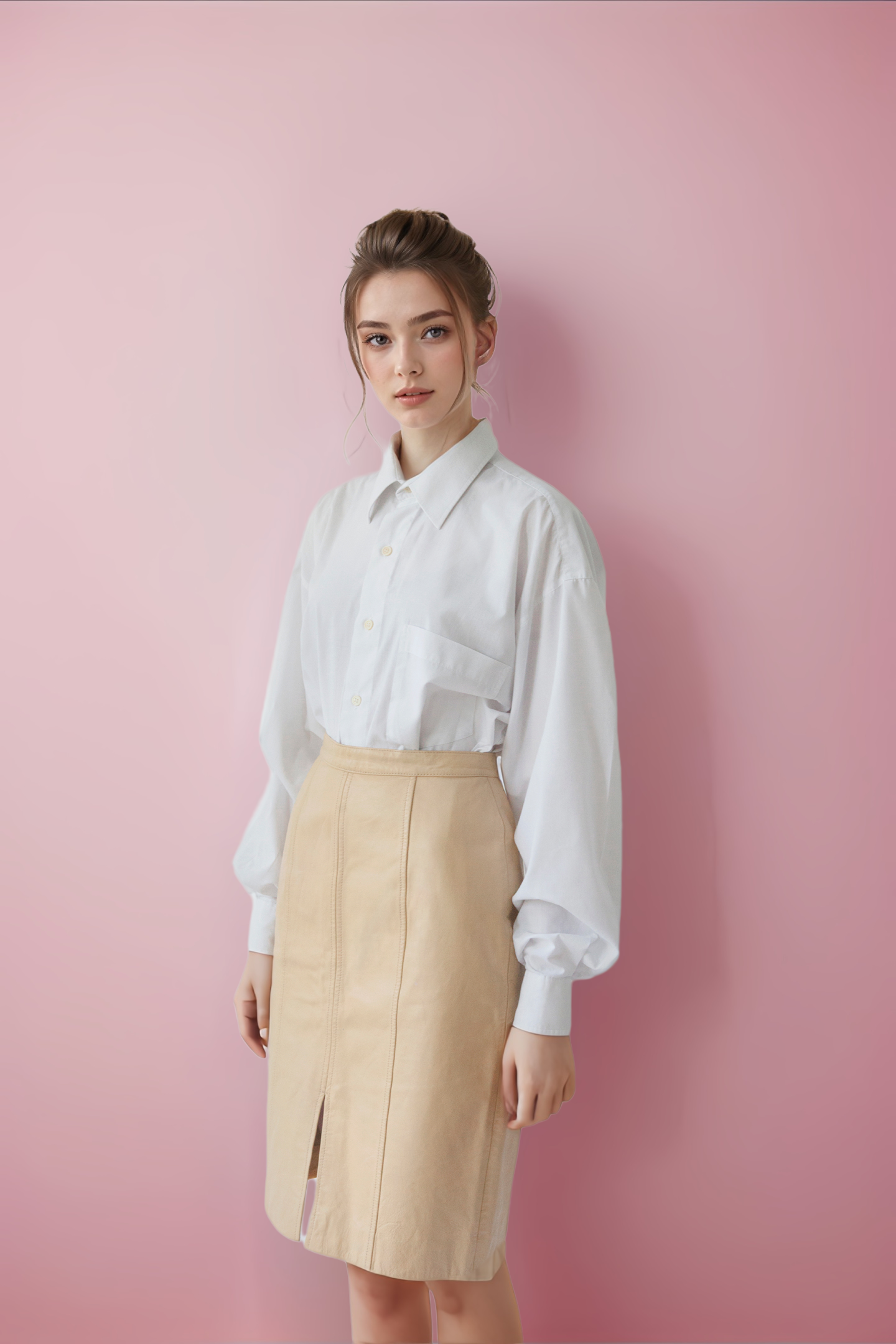
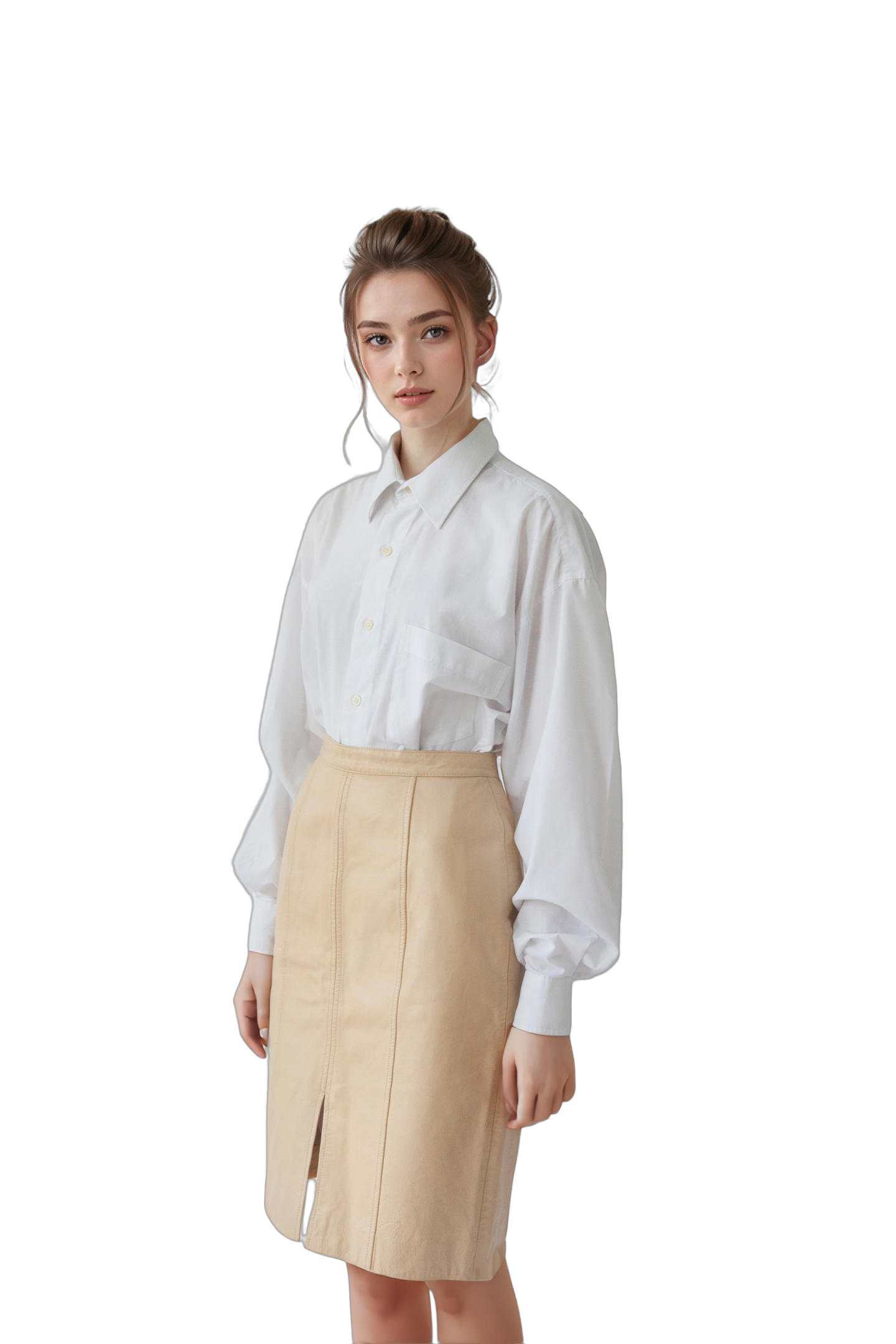
Congratulations! You have successfully generated AI fashion models with different backgrounds using the X-Design AI Fashion Model API.
Conclusion
In this tutorial, you have learned how to create an asynchronous task to generate AI fashion models and check the task status until the task is completed. You have also seen how to view the generated images with different backgrounds. In the next tutorial, you will learn how to generate AI fashion models with customized masks.